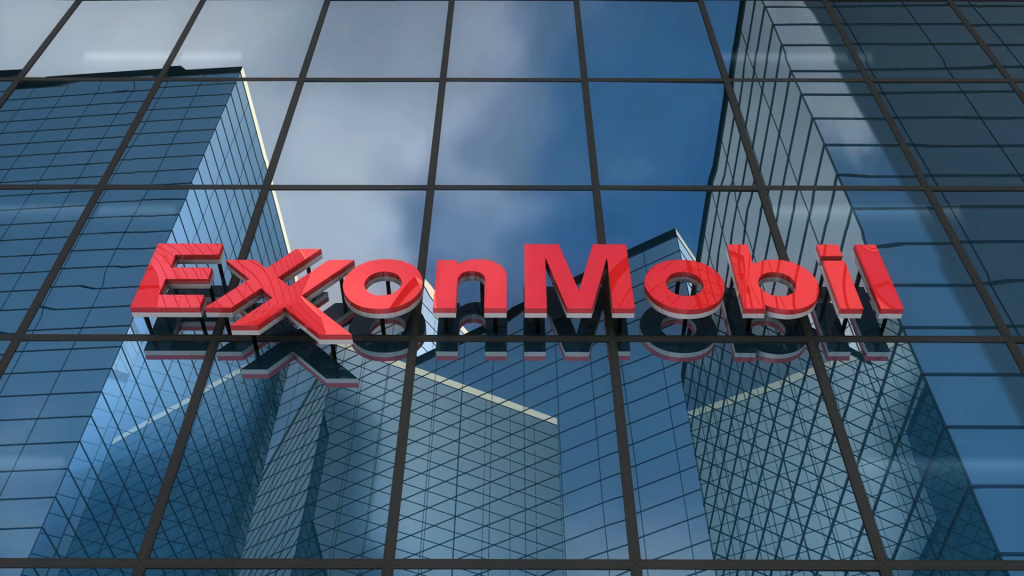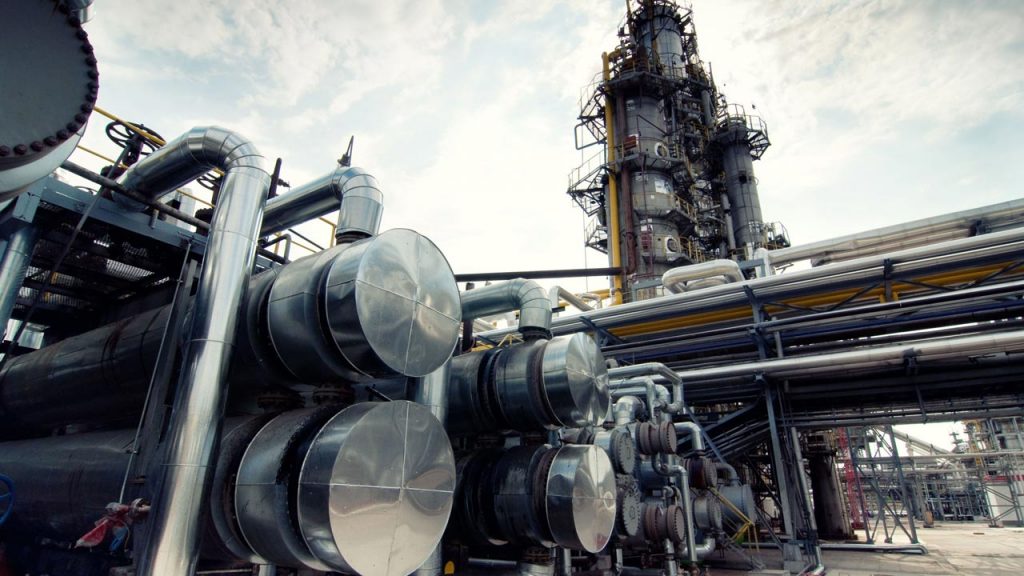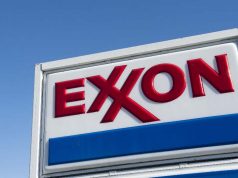This report provides the last five years revenues and revenue growth of Exxon Mobil Corp (XOM) from 2012 to 2016. ExxonMobil generated a total of $226.1 billion revenues during 2016. ExxonMobil reported a revenue growth of -15.9% year-over-year during 2016. The revenues and the revenue growth correspond to the fiscal year ending in December.
Here are the revenues and the revenue growth details of ExxonMobil during the last five years:
- ExxonMobil generated a total of $480.7 billion revenues during 2012. ExxonMobil reported a revenue growth of -1.2% year-over-year during 2012.
- ExxonMobil generated a total of $438.3 billion revenues during 2013. ExxonMobil reported a revenue growth of -8.8% year-over-year during 2013.
- ExxonMobil generated a total of $411.9 billion revenues during 2014. ExxonMobil reported a revenue growth of -6% year-over-year during 2014.
- ExxonMobil generated a total of $268.9 billion revenues during 2015. ExxonMobil reported a revenue growth of -34.7% year-over-year during 2015.
- ExxonMobil generated a total of $226.1 billion revenues during 2016. ExxonMobil reported a revenue growth of -15.9% year-over-year during 2016.

WHY ANALYZE REVENUE GROWTH?
Revenue growth is the most commonly analyzed financial metric. Revenue Growth is the percent increase (or decrease) of a company’s revenue between two time periods. It is computed by using the following formula: ((revenues during the time period two – revenues during the time period one) / revenues during the time period one)*100. If the time periods are two consecutive years, then the revenue growth is referred to as the annual revenue growth year-over-year. If the time periods are two consecutive quarters, then the revenue growth is referred to as the quarterly revenue growth quarter-over-quarter. If the time periods refer to the same quarter in the two consecutive years, then the revenue growth is referred to as quarterly revenue growth year-over-year. In case the time periods are two non-consecutive years, then the revenue CAGR (Commutative Annual Growth Rate) is computed.
Revenue growth analysis is important for a number of reasons. First, it helps in understanding how a business is performing. If the revenue growth rates are positive, it means the business is performing well and the revenues are increasing. If the revenue growth rates are negative, it means the revenues are declining and the company needs to take measures to increase them. If they don’t, the company will continue to shrink. Second, a company’s historical revenue growth analysis along with the market size and market share analysis helps in forecasting the future revenues of a company. Third, a comparison of a company’s growth rates with its competitors helps in determining who is winning more business. A revenue growth higher than the industry average translates into increasing market share. Companies with very high revenue growth rates have the potential to be the industry disrupters.

EXXONMOBIL RANKING
With $226.1 billion revenues, ExxonMobil ranked number 2 in the R&P; Research list of top-3000 public companies in the US by revenues during 2016. Each one of the top-3000 companies generated more than $50 million of annual revenues during 2016.
The top-20 companies in the US by revenues during 2016 were:
- Walmart ($482.1 billion)
- ExxonMobil ($226.1 billion)
- Berkshire Hathaway ($223.6 billion)
- Apple ($215.6 billion)
- McKesson ($190.9 billion)
- UnitedHealth Group ($184.8 billion)
- CVS Health ($177.5 billion)
- General Motors ($166.4 billion)
- AT&T; ($163.8 billion)
- Ford Motor ($151.8 billion)
- AmerisourceBergen ($146.8 billion)
- Amazon ($136 billion)
- Verizon ($126 billion)
- General Electric ($123.7 billion)
- Cardinal Health ($121.5 billion)
- Costco ($118.7 billion)
- Walgreens Boots Alliance ($117.4 billion)
- Chevron ($114.5 billion)
- Kroger ($109.8 billion)
- Express Scripts Holding ($100.3 billion)
For the purpose of performance benchmarking of a company with a sector or industry average, R&P; Research associates every company with one sector and one industry. An industry consists of companies with related/similar business models. A sector comprises of a group of related/similar industries. For example, Life Sciences sector is comprised of following industries: Pharmaceuticals; Medical Devices; Biotechnology; Diagnostics & Scientific Instruments.
ExxonMobil is associated with Oil & Gas Sector and Oil & Gas Production Industry.

With $226.1 billion revenues, ExxonMobil ranked number 1 of all the companies in the US Oil & Gas sector. There were a total of 230 public companies in the US Oil & Gas sector that had revenues greater than $50 million during 2016.
The top-10 companies in the US Oil & Gas sector by revenues during 2016 were:
- ExxonMobil ($226.1 billion)
- Chevron ($114.5 billion)
- Phillips 66 ($85.8 billion)
- Valero Energy ($75.7 billion)
- Marathon Petroleum ($63.4 billion)
- Energy Transfer Equity ($37.5 billion)
- Schlumberger ($27.8 billion)
- Imperial Oil ($27.4 billion)
- World Fuel ($27 billion)
- Tesoro ($24.6 billion)
Oil & Gas sector is comprised of the following industries: Oil & Gas Production; Oil & Gas Distribution; Oil & Gas Equipment and Services; Alternative Energy. The definitions for each of the industries is as follows:
- Oil & Gas Production industry includes companies primarily engaged in operating oil & gas properties. Key activities may include exploration for crude petroleum and natural gas; drilling, completing, and equipping wells; and all other activities in the preparation of oil and gas up to the point of shipment from the producing property. It also includes companies engaged in crude petroleum refining and producing gasoline, kerosene, distillate fuel oils, residual fuel oils, and lubricants, through fractionation or straight distillation of crude oil.
- Oil & Gas Distribution industry includes companies primarily engaged in the pipeline transportation of petroleum, natural gas, and other commodities. It also includes companies primarily engaged in the wholesale and retail distribution of petroleum and petroleum products.
- Oil & Gas Equipment and Services industry includes companies primarily engaged in drilling wells for oil or gas field operations for others on a contract or fee basis. It also includes companies providing exploration services and machinery & equipment for oil and gas field operations.
- Alternative Energy industry includes companies that develop or manufacture renewable energy equipment utilizing sources such as solar, wind, geothermal, hydro, and waves. It also includes companies that produce alternative fuels such as methanol, ethanol, hydrogen and biofuels that are mainly used to power vehicles.
With $226.1 billion revenues, ExxonMobil ranked number 1 of all the companies in the US Oil & Gas Production industry. There were a total of 89 public companies in the US Oil & Gas Production industry that had revenues greater than $50 million during 2016.

The top-10 companies in the US Oil & Gas Production industry by revenues during 2016 were:
- ExxonMobil ($226.1 billion)
- Chevron ($114.5 billion)
- Phillips 66 ($85.8 billion)
- Valero Energy ($75.7 billion)
- Marathon Petroleum ($63.4 billion)
- Imperial Oil ($27.4 billion)
- Tesoro ($24.6 billion)
- ConocoPhillips ($24.4 billion)
- PBF Energy ($15.9 billion)
- Devon Energy ($12.2 billion)
COMPANIES SEGMENTATION
To identify and analyze high/low growth or most/least profitable similar-size companies in different sectors or industries, R&P; research classifies all companies into different segments based upon their revenues, revenue growth, and net profit margins.
Based upon their annual revenues, the companies are classified into one of the following four segments:
- Mega companies, having revenues greater than $50 billion.
- Very Large companies, having revenues between $10 billion and $50 billion.
- Large companies, having revenues between $1 billion and $10 billion.
- Mid-size companies, having revenues between $50 million and $1 billion.
With $226.1 billion revenues, ExxonMobil was in the Mega companies revenue segment during 2016. There were a total of 54 companies in the Mega companies revenue segment during 2016.

Based upon their annual revenue growth, the companies are classified into one of the following eight segments:
- Very High positive growth companies, having annual revenue growth greater than 50%.
- High positive growth companies, having annual revenue growth between 20% and 50%.
- Medium positive growth companies, having annual revenue growth between 5% and 20%.
- Low positive growth companies, having annual revenue growth between 0% and 5%.
- Low negative growth companies, having annual revenue growth between -5% and 0%.
- Medium negative growth companies, having annual revenue growth between -20% and -5%.
- High negative growth companies, having annual revenue growth between -50% and -20%.
- Very High negative growth companies, having annual revenue growth less than -50%.
With -15.9% revenue growth year-over-year, ExxonMobil was in the Medium negative revenue growth segment during 2016. There were a total of 448 companies in the Medium negative revenue growth segment during 2016. Of the US top-3000 companies, 1985 (nearly two-third of the total) had positive revenue growth and 1015 (nearly one-third of the total) had negative revenue growth during 2016.
Based upon their annual net profit margin, the companies are classified into one of the following eight segments:
- Very High positive margin companies, having net profit margin greater than 50%.
- High positive margin companies, having net profit margin between 20% and 50%.
- Medium positive margin companies, having net profit margin between 5% and 20%.
- Low positive margin companies, having net profit margin between 0% and 5%.
- Low negative margin companies, having net profit margin between -5% and 0%.
- Medium negative margin companies, having net profit margin between -20% and -5%.
- High negative margin companies, having net profit margin between -50% and -20%.
- Very High negative margin companies, having net profit margin less than -50%.
With a net margin of 3.5%, ExxonMobil was in the Low positive net profit margin segment during 2016. There were a total of 707 companies in the Low positive net profit margin segment during 2016. Of the US top-3000 companies, 2244 (nearly three-fourth of the total) had positive net profit margin and 756 (nearly one-fourth of the total) had negative net profit margin during 2016.
COMPANY BUSINESS SUMMARY
Exxon Mobil Corporation explores for and produces crude oil and natural gas in the United States, Canada/South America, Europe, Africa, Asia, and Australia/Oceania. The company operates through Upstream, Downstream, and Chemical segments. It also manufactures petroleum products; manufactures and markets commodity petrochemicals, including olefins, aromatics, polyethylene, and polypropylene plastics, as well as various specialty products; and transports and sells crude oil, natural gas, and petroleum products. The company has approximately 35,047 gross and 29,375 net operated wells. Exxon Mobil Corporation has collaboration agreements with Eagle LNG Partners LLC and Crowley Maritime Corporation to collaborate on the development of LNG as a marine fuel. The company was founded in 1870 and is headquartered in Irving, Texas.

DATA SOURCE
The chart and the data on this page are sourced from the R&P; Research Industry Intelligence Platform. The platform provides the key financial metrics for all the public companies in the United States. The platform empowers users to compare last five or 15 years financial data of a company with the other companies or the industry averages. This benchmarking exercise yields powerful insights that can drive better business decisions.















